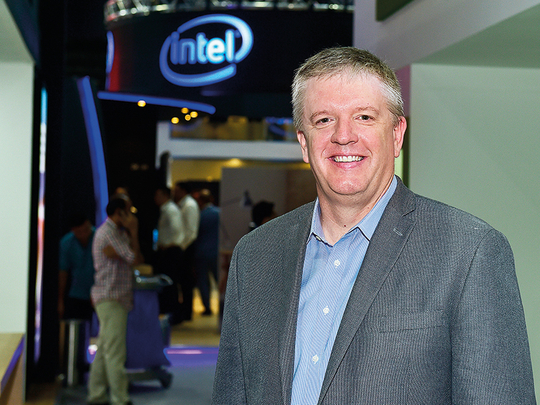
Dubai: The modern workplace has changed a lot since the days when PCs were the dominate hardware available to employees.
Not surprisingly, Intel wants to being the office’s focus back to PCs. That’s a challenge with smart-phone loving millennials now firmly entrenched in the workplace,
“Smartphones among millennials are seen as a distraction, but PC brings the opportunity to focus on the work and make them more productive,” says Tom Garisson, vice-president for client computing group and general manager for desktop, commercial and channel at Intel, told Gulf News. “The PC is the most powerful tool ever invented to focus people and make them contribute to the highest level.”
Quoting a recent study, he said that more than 50 per cent of millennials don’t want to work for a company if the company wants to provide a device that they don’t think is adequate to do the job.
Performance is “supercritical” when it comes to why people want to invest in a new platform.
He said that there are several factors Intel is exploring for the “digital workplace”.
“One is improving security and providing the right devices for the job and collaboration. We want devices to be designed for the type of work, whether at home or office, or maybe watching or streaming movies. The device needs to transform throughout the day whatever role you play.
“Second is the security. The devices need to go with you, inside and outside the firewall. We need to invest in the platform to make it secure... to protect your data. Collaboration is important for us as millennials want the right device,” Garisson said.
Garisson said that Intel has been improving its security features on the chip from the sixth-generation onwards.
“We have multi-factor authentication facilities on a PC built into the platform. The demand for PCs globally is expected to be flat or slightly higher this year. With the eight- and ninth-generation processors, it [security] has improved a lot along with other features,” he said.
Intel, the world’s largest PC and server microprocessor manufacturer, has been losing the markets share to long-time rival AMD due to a shortage of chips as it plans to transitions from 14 nanometre (nm) chips to 10nm. Shrinking the distance between transistors on a chips means better efficiency and faster processing powers. One nanometer is equal to one-billionth of a metre.
According to reports by analysts at investment bank JP Morgan, Intel can’t produce enough 14nm chips due to a slowdown of node progression to 10nm, but Garisson disputes this and said that increased demand has put pressure on its factory network, forcing the company to prioritise the production of Xeon and Core processors.
“Moore’s Law has been historically every two years but what we are seeing is that when we get into smaller dimensions, it is becoming more complicated and literally we are inventing and working within the laws of physics. We are still confident of the 10nm chipset,” he said.
Intel co-founder Gordon Moore coined the frame Moore’s Law in 1965 and said that processing power and speed will double every two years as transistors per square inch on integrated circuits double.
“Moore’s law is still intact for Intel and we are innovating on the transistor density and deliver the performance people want. We have visibility from where we are today,” he said.












